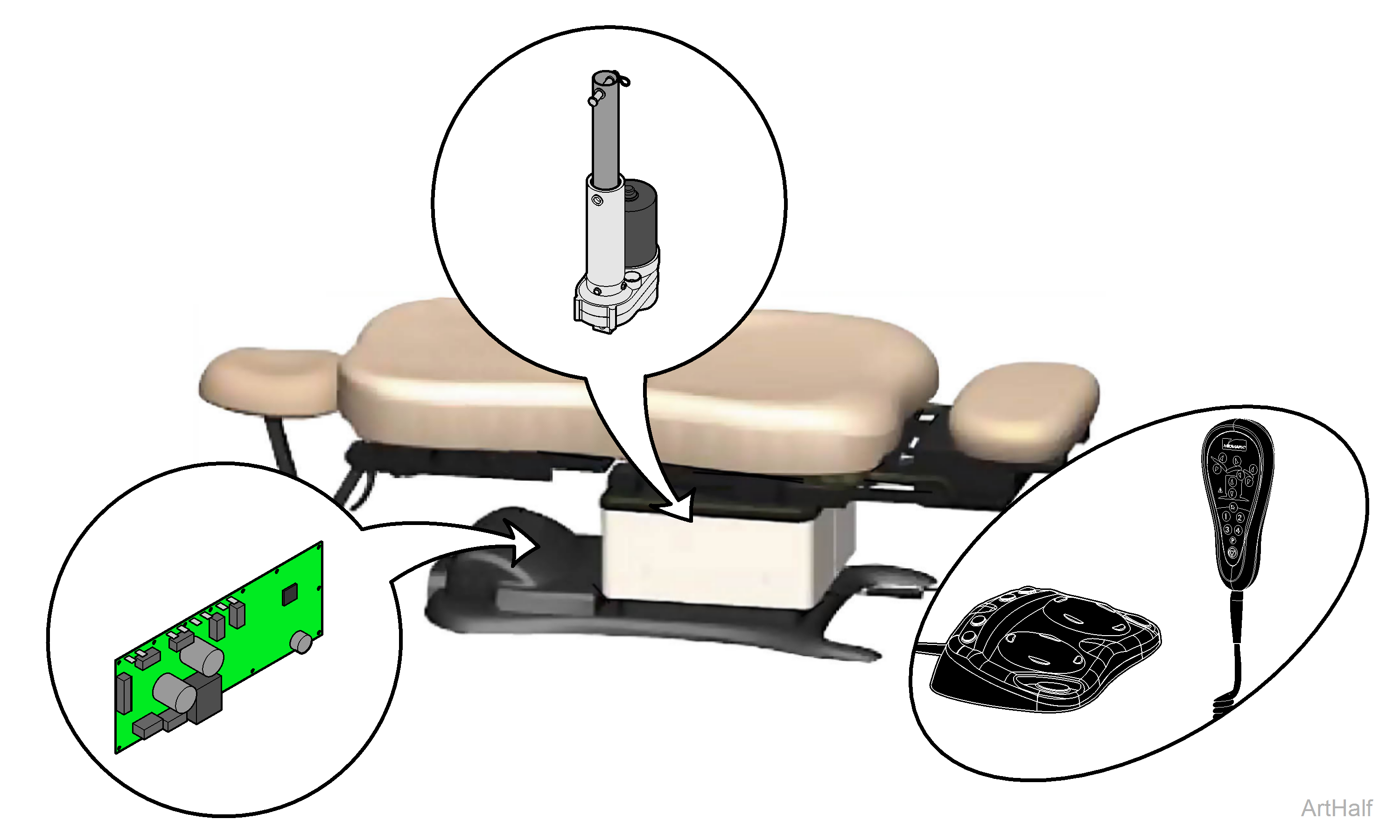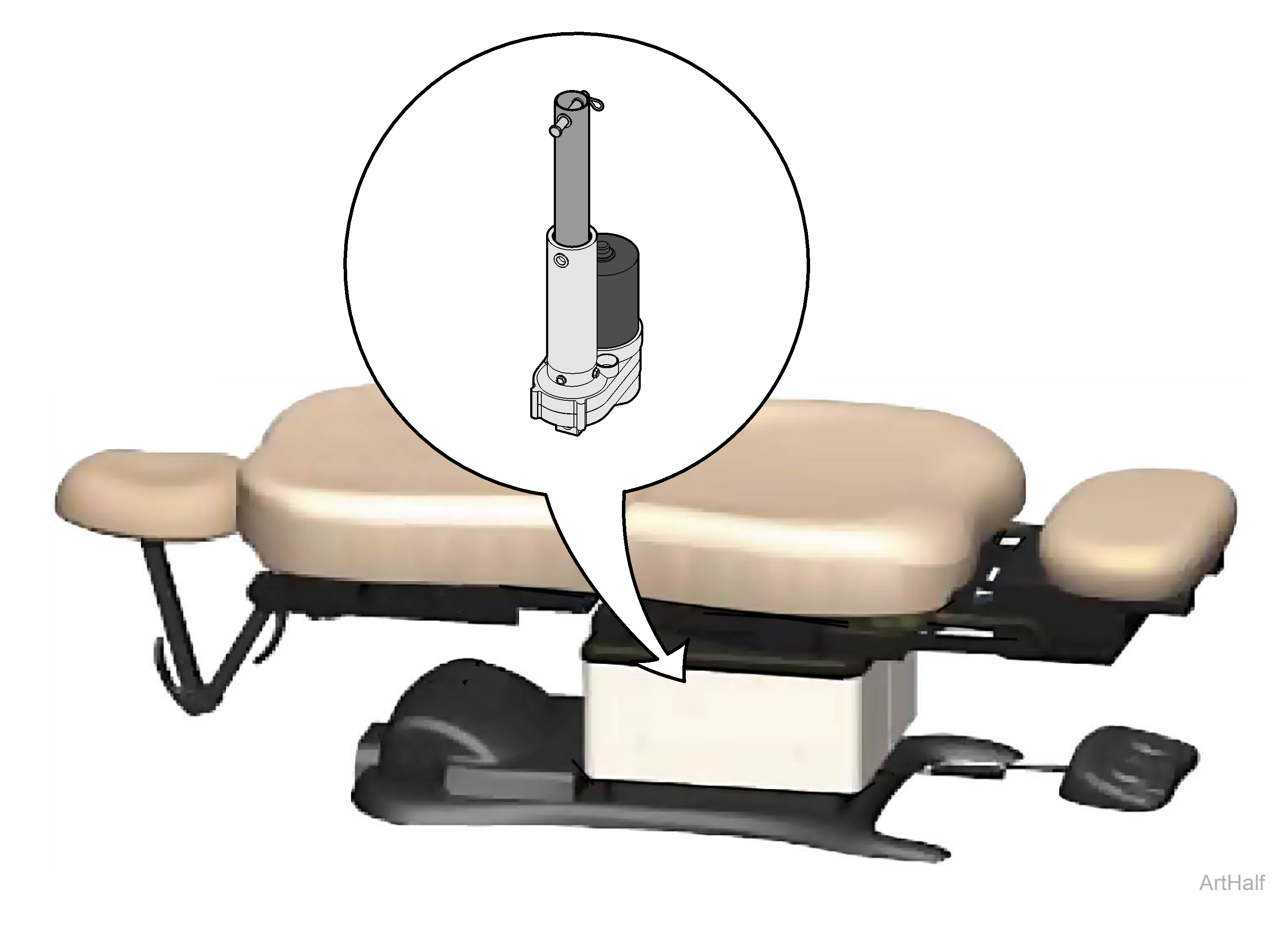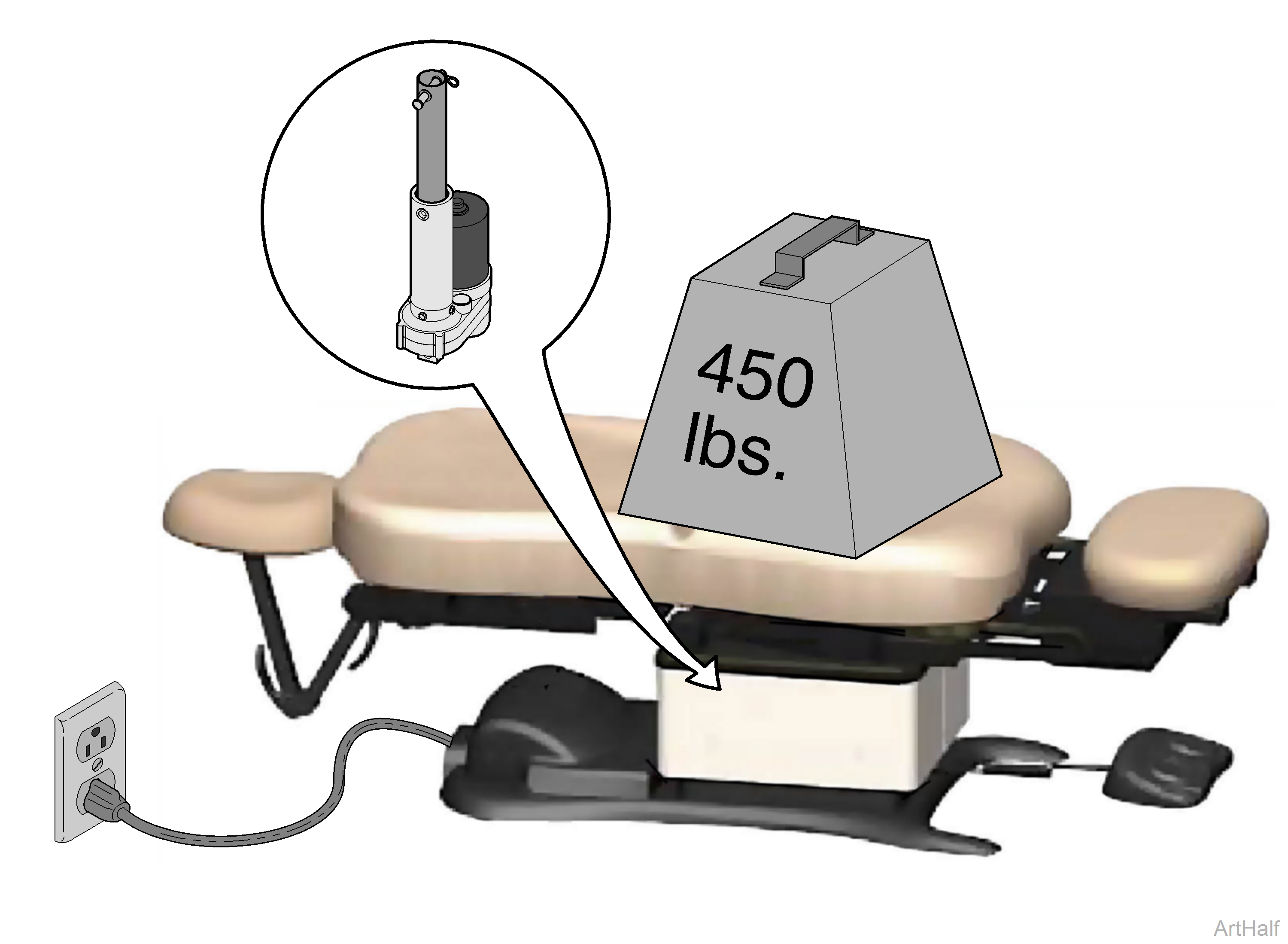230 Universal Procedures Chair Tilt Up / Down Function Troubleshooting
This illustration shows only the components that affect the Tilt Up / Down function.

•If Power Light is On, proper voltage is present at PC Board.
•If Power Light is off, refer to Page A-2 for troubleshooting.
When voltage is present at the PC board, the power light is illuminated. Refer to:Power To The Chair for description of current flow to the PC board.
Circuitry on the PC board supplies 8-10 VAC to the hand / foot control connection ports.
When the Tilt Up function is activated, current flows thru the hand / foot control, back to the PC board. Circuitry on the PC Board supplies approximately 48 VDC to the tilt actuator motor.
The actuator motor runs and reclines the seat section.
The PC board continuously monitors the Tilt Up limit switch (mounted inside the actuator) and the Tilt position sensor*.
If the Tilt Up limit switch is tripped (open), the Tilt Up function will not operate.
If the Tilt position sensor detects that the chair is in a potential “crash position”, or that the seat section has reached its upper limit, the Tilt Up function will not operate.
Actuator Motor runs until
1.Hand / foot control button is released.
2.Tilt Up limit switch is tripped.
3.Emergency Stop button* is pressed.
4.Crash Avoidance System* activated.
5.Position Sensor* malfunction.
6.Overcurrent protection tripped.
7.Software time-out limit is reached, approximately 30 seconds.
Midmark models only. This feature is not available on Ritter models
When the Tilt Down function is activated, current flows thru the hand / foot control, back to the PC board. Circuitry on the PC Board supplies approximately 48 VDC to the tilt actuator motor.
The actuator motor runs and brings the seat section back to a flat position.
The PC board continuously monitors the Tilt Down limit switch (mounted inside the actuator) and the Tilt position sensor*.
If the Tilt Down limit switch is tripped (open), the Tilt Down function will not operate.
If the Tilt position sensor detects that the seat section has reached its lower limit, the Tilt Down function will not operate.
Actuator Motor runs until
1.Hand / foot control button is released.
2.Tilt Down limit switch is tripped.
3.Emergency Stop button* is pressed.
4.Position Sensor* malfunction.
5.Overcurrent protection tripped.
6.Software time-out limit is reached, approximately 30 seconds.
Midmark models only. This feature is not available on Ritter models

1.Loose / Damaged Wire Connections - Tilt Actuator, Tilt Up/Down Limit Switches, and hand/foot control ports
2.Hand / Foot Control Refer to: Hand and Foot Controls
3.Tilt Actuator Refer to: Tilt Actuator
4.Main PC Board Refer to: Main PC Board

1.Loose / Damaged Wire Connections - Tilt Actuator, Tilt Up/Down Limit Switches, and hand/foot control ports
2.Hand / Foot Control Refer to: Hand and Foot Controls
3.Tilt Actuator Refer to: Tilt Actuator
4.Main PC Board Refer to: Main PC Board

1.Loose / Damaged Wire Connections - Tilt Actuator, Tilt Up/Down Limit Switches, and hand/foot control ports
2.Hand / Foot Control Refer to: Hand and Foot Controls
3.Tilt Actuator Refer to: Tilt Actuator
4.Main PC Board Refer to: Main PC Board

1.Tilt Actuator Refer to: Tilt Actuator

1.Tilt Actuator Refer to: Tilt Actuator

1.Did patient exceed 450 lb. weight limit? Inform staff that max. patient weight is 450 lbs. Refer to: Specifications
2.Low voltage to chair
| Required voltage: | |
|---|---|
|
115 VAC setting |
115 +10% VAC |
|
230 VAC setting |
230 +10% VAC |
3.Tilt Actuator Refer to: Tilt Actuator

